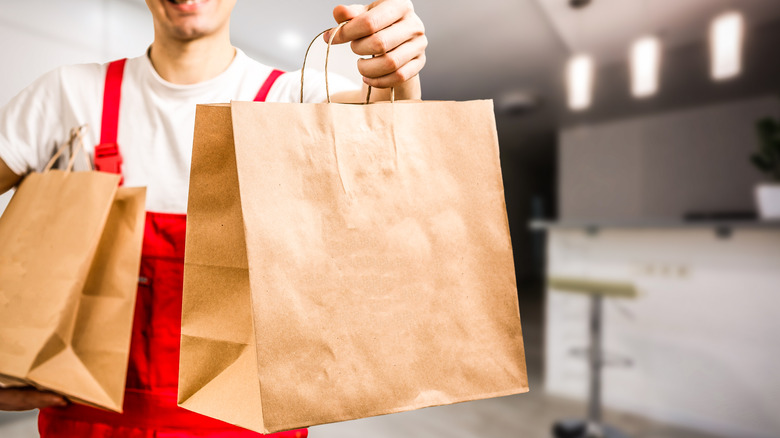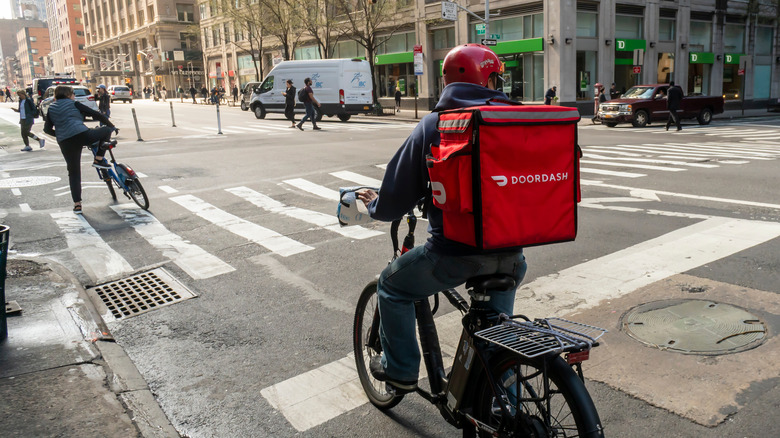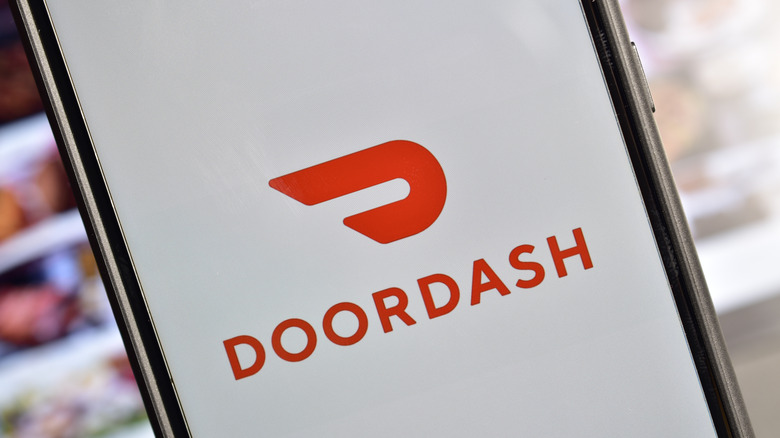The Real Reason DoorDash Says Profits Are Soaring
You might know it from its speed clause with McDonald's or its Valentine's Day campaign with Shake Shack. Or, maybe you know it from the delivery driver knocking on your front door, like, right now. Either way, there's a pretty small chance that you haven't heard of or already used DoorDash.
In their official 2022 letter to shareholders, food delivery service DoorDash announced massive financial growth and continued success. First quarter revenue increased a whopping 35% to $1.5 billion, year-over-year, and total orders grew 23% to 404 million in the first three months alone. DoorDash also reports generating over $8.7 billion in sales for restaurants and more than $3.2 billion in earnings for employees ("Dashers").
In the letter, the company said they attracted more first-time customers than any other quarter since the first quarter of 2021, and that returning customers started ordering more frequently. To seize this opportunity, DoorDash introduced "DashPass," a subscription service that allows frequent users to bypass delivery fees on orders over $12, at participating restaurants. DashPass members also have access to exclusive promotions, and the incentives must be doing the trick: DoorDash reports that DashPass subscribers reached a record high in Q1.
The company began on the campus of Stanford University in 2013, with founders Evan Moore and Tony Xu personally delivered food to students, reports Vator News. But how did this small start-up company explode into the food delivery giant it is today? The DoorDash founders explain.
DoorDash puts employees and merchants first
Moore and Tzu say they structured their company around a prioritization for dashers and restaurants, via The Business of Business. "We could not be more grateful to our employees and stakeholders for the confidence they place in us," DoorDash writes in their letter to shareholders. Drivers have even been given a 10% cash return on their fuel purchases through August 2022 to offset the recent rise in gasoline prices, FOX Business reports. According to employment recruitment site Indeed, the average DoorDash delivery driver in New York makes $16.87 per hour, which exceeds New York City's minimum wage of $15. Dashers can also earn bonuses by completing a certain number of trips within a given amount of time, per Ridester, and they also keep 100% of passenger tips.
It's not just employees the company prioritizes: DoorDash demonstrated a commitment to helping local communities as well by investing $200,000 in independent businesses in 2020 (via The Business of Business). These efforts are evidently working: Macrotrends estimates that DoorDash has a current net worth of $27.59 billion.
The future of DoorDash
Even though DoorDash is still growing, its growth per quarter has slowed down substantially since 2021. In the letter, DoorDash explains that the reason Q1 2022 revenue grew faster than Marketplace GOV is because of the sudden boom in DoorDash popularity in 2021.
DoorDash went public with shares in 2020, via Pymnts, and talk about being at the right place at the right time: The March 2020 outbreak of the coronavirus helped bring massive revenue to the company, as food delivery quickly transformed from a luxury to an essential service.
During the first three months of 2021, the pandemic lifestyle was still new, and weather patterns were extreme at best. Winter 2020-2021 saw the west coast burn with wildfires, and there were more hurricanes nationwide than letters in the alphabet to name them, via Fox 5 New York. Plus, in December 2020, Americans began receiving stimulus checks to offset the economic decline incited by the pandemic, per Tax Outreach. The poor weather and sudden pocket money made choosing DoorDash something of an easy decision for hungry folks at home.
Still, despite lowered monthly growth, the company is still seeing massive net growth, and it's unlikely to go anywhere anytime soon. DoorDash is still far and away outperforming competitors, reports CNBC: In April 2021, it accounted for 45% of all food delivery service sales, with UberEats at 28%, GrubHub at 17%, and Postmates at 7%.


